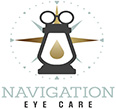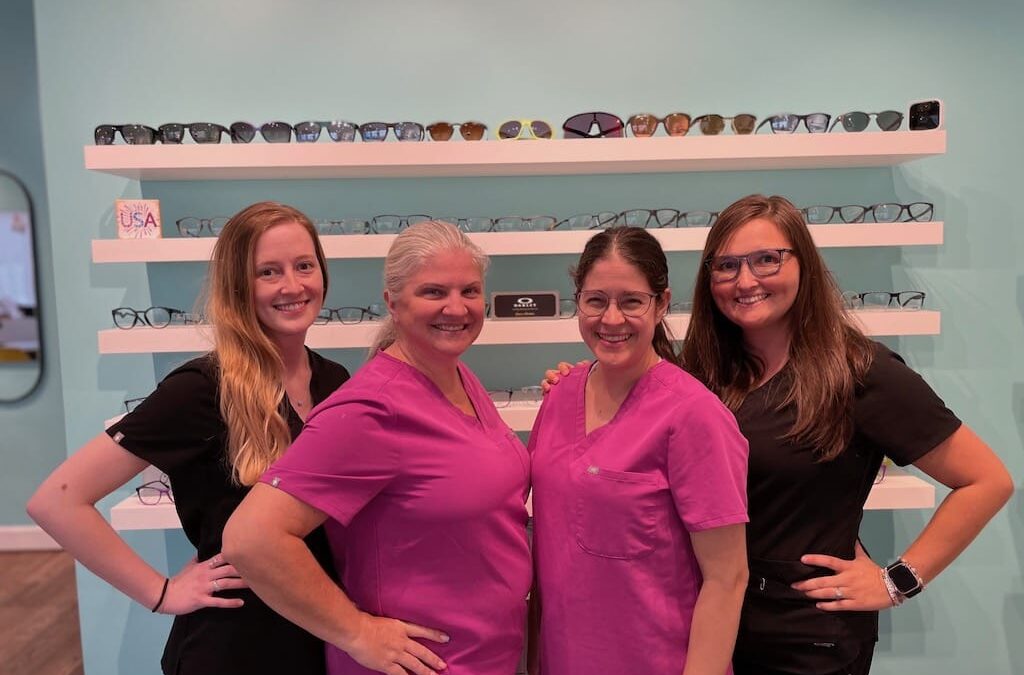Eye-Q for Parents: A Guide to Detecting Visual Problems in Infants
Parenthood is an exhilarating journey filled with precious moments and challenges alike. As parents, we’re often consumed with ensuring our little ones are healthy and happy, but amidst the chaos of diaper changes and midnight feedings, one crucial aspect can sometimes slip through the cracks: our children’s visual health. Surprisingly, visual problems can affect infants too, which is why we’ve put together this informative guide to help you become a vigilant guardian of your child’s precious eyesight.
The Power of Early Detection
Visual development kicks off in infancy and continues as your child grows. Those early years are critical for setting the stage for a lifetime of healthy vision. Undetected visual problems during this period can lead to learning difficulties and social challenges down the road. So, let’s delve into the importance of early detection.
Milestones on the Road to Clear Vision
Understanding what’s normal for your baby’s visual development can be the first step in identifying potential issues. Here are some significant milestones to keep in mind:
- Tracking Objects: Around two to three months, your baby should start following objects with their eyes as they move. If this isn’t happening, it’s time to take notice.
- Eye Contact: Engaging in eye contact and mutual gaze should be happening by the time your baby is a few months old. If it’s not, it might be worth a closer look.
- Focusing: By three to four months, your baby should begin focusing on objects and faces. If they seem disinterested or struggle to focus, it’s a signal for concern.
- Strabismus: Strabismus, also known as crossed eyes, can appear around six months. If one or both of your baby’s eyes consistently turn inward or outward, it’s time to consult an optometrist.
The Telltale Signs
In addition to the milestones, watch out for these potential warning signs:
- Excessive tearing or eye discharge: Consistent tearing or discharge could indicate an eye infection or blocked tear duct.
- Red or swollen eyes: These symptoms might point to an eye infection or allergy.
- Frequent eye rubbing: If your baby often rubs their eyes, it could be due to discomfort or vision problems.
- Light sensitivity: Squinting or discomfort in bright light may suggest an underlying issue.
Consulting an Optometrist Chesapeake VA
When you notice any of these warning signs or have concerns about your baby’s visual development, don’t hesitate to consult Navigation Eye Care’s optometrist Chesapeake VA, her specialty is in pediatric eye care. Early intervention is key to addressing potential problems and ensuring your child’s vision matures properly.
Navigation Eye Care’s pediatric eye doctor is an expert in diagnosing and treating visual issues in infants and children. She can conduct thorough eye exams and recommend appropriate interventions if necessary. Remember, when it comes to your child’s visual health, starting early can lead to a lifetime of clear vision.
Parenting is a whirlwind, but it’s essential not to overlook your child’s visual health. Stay vigilant, monitor those visual milestones, and be on the lookout for warning signs. Regular check-ups with Navigation Eye Care’s qualified optometrist Chesapeake VA and team, can provide peace of mind and ensure your child’s eyes are developing as they should. Remember, early detection and intervention are the building blocks for a lifetime of healthy vision for your little one. Your baby’s eyes are worth every watchful moment.
Teaching Vision: How Teachers and Parents Can Support Kids with Vision Issues
Education is the key to a brighter future, and it’s crucial that every child has access to a quality learning experience. However, what if a child’s vision is hindering their ability to excel in school? We will explore the essential role teachers and parents play in supporting children with vision issues and how consulting Navigation Eye Care’s highly qualified Optometrist Chesapeake VA whom specializes in pediatric eye care can make a significant difference in a child’s education.
The Silent Struggle: Vision Issues in Kids
Imagine trying to learn and absorb knowledge when the world around you is blurry or distorted. This is the reality for many children who struggle with undiagnosed vision issues. These issues can manifest in various ways, such as difficulty reading, frequent headaches, or a lack of interest in school.
The Role of Teachers
Teachers are often the first to notice when a child is experiencing difficulties in the classroom. While they may not be optometrists, they can still play a crucial role in identifying potential vision problems. Here’s how:
- Observation: Teachers should pay attention to students who frequently squint, sit too close to the board, or have trouble focusing on their work. These could be signs of vision issues.
- Communication: Teachers should communicate with parents about any concerns they have regarding a child’s vision. Open dialogue can lead to early intervention.
- Accommodations: Teachers can make simple accommodations, such as allowing a child to sit closer to the board or providing enlarged print materials, to help students with vision issues.
The Responsibility of Parents
Parents are the primary advocates for their children’s health and well-being. When it comes to vision issues, here’s what parents can do:
- Regular Eye Exams: Schedule regular eye exams for your child with an Navigation Eye Care’s pediatric eye doctor. She can detect and address vision problems that might otherwise go unnoticed.
- Communication: Keep an open line of communication with your child about their vision. Encourage them to express any discomfort or difficulties they may be experiencing.
- Homework Environment: Ensure that your child’s study environment is well-lit and free from distractions that could exacerbate their vision problems.
The Role of Navigation Eye Care
Navigation Eye Care’s team is trained to diagnose and treat a wide range of vision issues, and they play a crucial role in a child’s educational journey. Here’s why consulting Navigation Eye Care’s Optometrist Chesapeake VA is essential:
- Early Detection: Identify vision issues early, preventing them from becoming more severe and affecting a child’s learning experience.
- Customized Solutions: Recommend personalized solutions, such as eyeglasses or vision therapy, to address a child’s specific vision needs.
- Educational Support: Work closely with teachers and parents to create a comprehensive plan to support a child’s vision needs in the classroom and at home.
Vision issues should not stand in the way of a child’s education and future success. Teachers and parents must work together as a team to identify and address these issues early on. Consulting Navigation Eye Care’s Optometrist Chesapeake VA and her team can provide the expertise needed to ensure that every child has the opportunity to thrive academically and enjoy a clear vision of their bright future.

